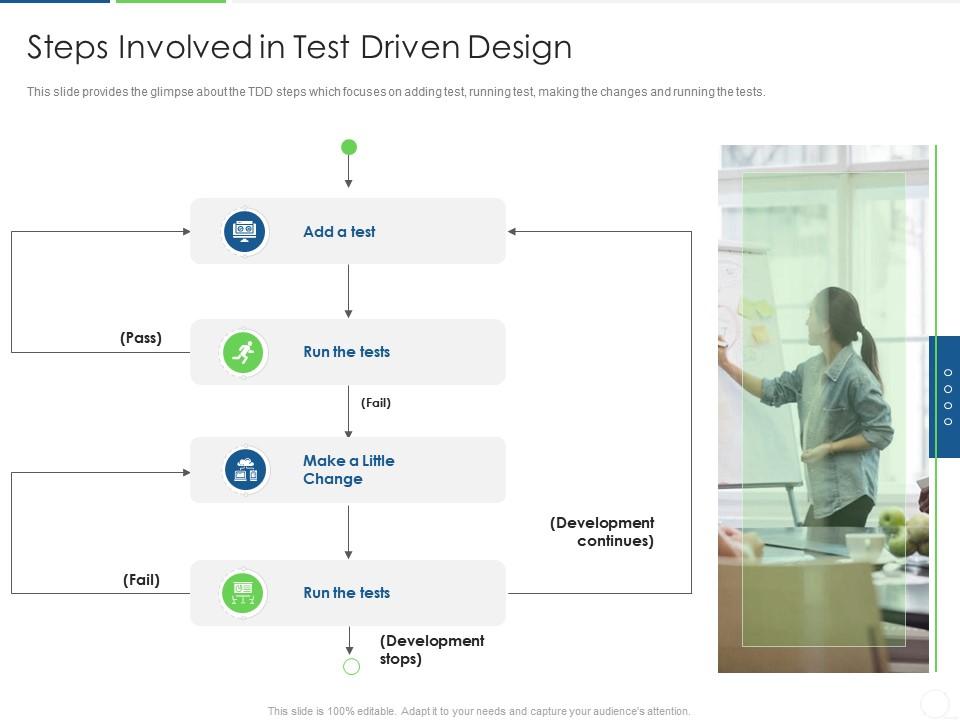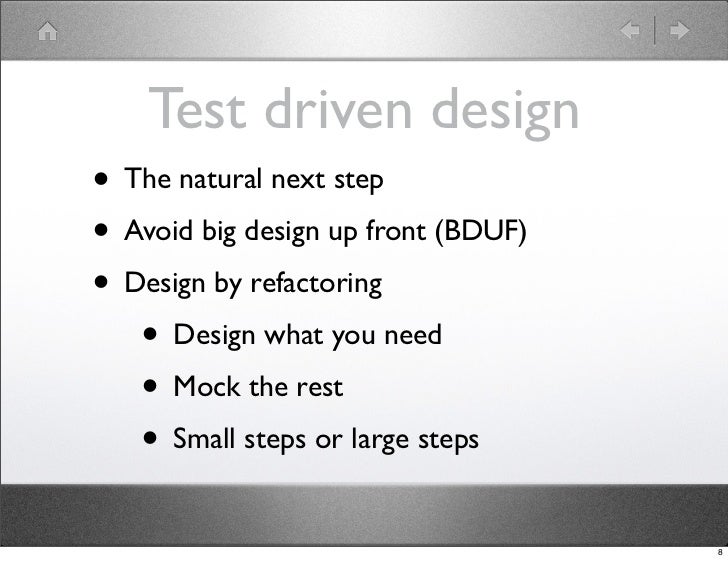
We review these steps to be sure that we have no gaps relative to the original requirements - no more and no less - from a business perspective without going deeply into implementation details. There are a few situations when unit tests are better than TDD. If new code fails some tests, the programmer can undo or revert rather than debug excessively.
Software for TDD
Finally, you will also attempt a final exam to test the concepts learned. It's common in traditional workflows to have lengthy design and implementation phases. This leads to frequent feedback and immediate course correction.
BDD Testing: A Detailed Guide
Java.util.Vector and java.util.Hashtable are obsolete. While still supported, these classes were made obsolete by the JDK 1.2 collection classes and should probably not be used in new development. We sometimes need a chain of if/else statements; to optimize it, order the if statement test cases from the most visited case to the least visited case. Even better, if applicable, is to change to a switch-case statement to avoid testing cases and directly reach the case.
How to perform TDD Test
Is TDD a Form of OCD? - InfoQ.com
Is TDD a Form of OCD?.
Posted: Fri, 15 Sep 2017 07:00:00 GMT [source]
Introducing dependencies on external modules or data also turns unit tests into integration tests. If one module misbehaves in a chain of interrelated modules, it is not so immediately clear where to look for the cause of the failure. To solidify the practicality of TDD, we observed the examples of its successful adoption in real-world Java projects.
You will explore BDD, including its benefits for higher-level automated testing and its typical workflow. You will discover the basics of Gherkin syntax, a standard syntax for writing BDD specifications. You will learn about popular BDD tools and how to select the best one for your project. This module also covers essential methods for performing BDD with Behave.
Writing and maintaining an excessive number of tests costs time. Also, more-flexible modules (with limited tests) might accept new requirements without the need for changing the tests. For those reasons, testing for only extreme conditions, or a small sample of data, can be easier to adjust than a set of highly detailed tests.
This year's rankings have introduced an Economic Mobility Index, which measures the economic status change for low-income students. ACT/SAT scores have been removed from rankings to reflect a general de-emphasis on test scores in the college admissions process. Acceptance criteria can help in understanding specific examples, but if those criteria are weak, then developers and testers are left guessing as to what correct behavior looks like.
Test-driven Development (TDD) is the idea of writing small, incremental tests that verify the code's behavior. These tests are then run automatically to ensure that they pass before the actual code is written. This approach helps catch errors earlier in the development process, saving time and reducing the risk of costly bugs. TDD is not just about writing unit tests; it is a complete development process that includes writing automated Acceptance testing, Integration testing, and Regression testing. By following this process, developers can ensure that the software works as expected and new changes to the existing codebase do not break any current functionality. This module provides an overview of behavior driven development (BDD).

Get the latest Agile news!
It is also important to use code coverage tools to measure the test coverage and identify codebase areas uncovered by tests. This helps to ensure that the code is thoroughly tested and that any potential bugs are caught early in the development process. Test-Driven Development (TDD) is a software development approach where tests are written before the actual code. Learn Test-Driven Development meaning, examples, and best practices for effective software development.
From here, we identify the objects and their public APIs (properties, methods, etc) for the feature we need to realize while maintaining a single layer of abstraction. When we need to, we step a layer deeper into the objects we come up with and write more specific tests. Riley said being forced to adjust tests due to changing designs was just a part of the nature of programming and not a unique failing of TDD. After all, even if tests are written after the code, tests would still have to be adjusted if the architecture shifts. When you write code for one test at a time, you don’t have to constantly worry as much about the impact a certain module has on another. You start by writing a test case for one specific feature.
In Extreme Programming, tests are a mandatory part of planning and feedback loops. We're not sure if there are edge cases we're missing, if there are structural problems with the way we've written our code, and if we're even going to be able to test the thing. This is true for much of the other test types as well (unit, acceptance, E2E, contract, etc). This is especially important later on in a project when the codebase is much larger than it was at the beginning, and there's way more code that one human being can mentally account for anymore.
This eliminates the need for additional unit test cases. The TDD technique is based on the foundational principles of the Agile Manifesto and extreme programming. A structural approach enables developers and testers to produce optimized code that exhibits long-term resilience.
It is important that such testing hacks do not remain in the production code. In C and other languages, compiler directives such as #if DEBUG ... #endif can be placed around such additional classes and indeed all other test-related code to prevent them being compiled into the released code.
Below we will explore a few test strategies that would help us widen our scope beyond TDD. In comparison to TDD, which drives entire application development, unit testing only tests functions, classes, and procedures. Using Test Driven Development in your software development process has many advantages. Traditional techniques focus on first the code, and then test cases are executed.
Test-driven development (TDD) is a strategic software development approach where test cases are created before the actual code. It ensures code reliability and functionality by continuous testing throughout the development process. Tools such as JBehave, Cucumber, Mspec and Specflow provide syntaxes which allow product owners, developers and test engineers to define together the behaviors which can then be translated into automated tests. It’s easy to fall into that pattern of writing tests for the wrong reasons if tests are written after the code.
Meanwhile, Martin Fowler, Kent Beck, and David Heinemeier Hansson engage in a series of discussions asking "Is TDD Dead?" They address TDD's limitations and how not to do TDD. An early study of TDD shows that it produces code that passes 18% more black box test cases compared to the Waterfall model. In the early 1960s, programmers at NASA working on the Mercury Space Program write test cases on punched cards before writing the program code. They work on half-day iterations doing test-first micro-increment cycles. Engineers on this project were doing incremental development as early as 1957. Conrad Benham, principal consultant at Stride, said he avoids creating mocks of domain objects for that reason.

No comments:
Post a Comment